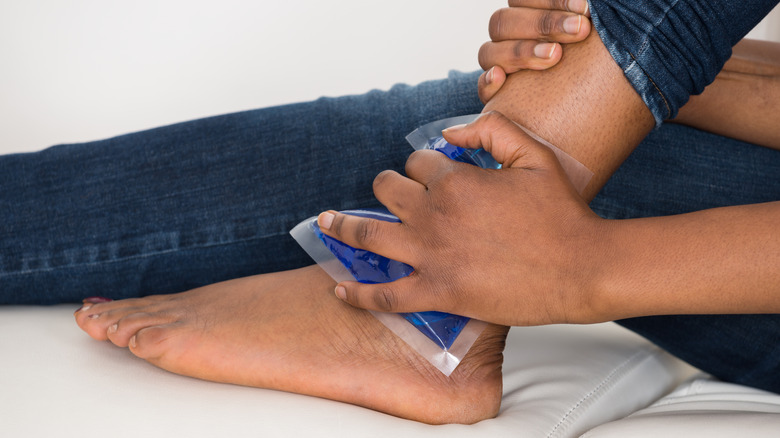What To Expect After Getting Cortisone Injections
When going to the doctor, cortisone injections are sometimes used to reduce inflammation and lessen pain localized to particular areas of the body, such as one's ankle, wrist, hip, or shoulder, according to the Mayo Clinic. However, cortisone shots are not without potential side effects. For this reason, patients are only able to receive so many on a yearly basis.
To get a better idea of what these side effects may look like, Health Digest spoke with Dr. Bruce Pinker, board-certified podiatrist and foot surgeon, who further explained the risks as well as who cortisone injections might not be suitable for. "Some possible side effects from cortisone injections include pain at the site of the injection where the needle pierces the skin, redness near the injection site, and blanching of the skin," he states. "In rare cases, a cortisone injection, if applied into a tendon region, can possibly lead to weakening of the tendon." Dr. Pinker goes on to explain that there are also cases where a cortisone shot may not be the best option for a patient.
Aftercare and who should avoid a cortisone injection
"Diabetics with elevated blood sugar levels should not receive cortisone injections for risk of the cortisone leading to a spike in blood sugar," Dr. Pinker tells Health Digest. He says that cortisone shots should also be avoided by those who may be allergic to the medication. However, those with health conditions aren't the only people who a cortisone injection may not be suitable for. "If there is an infection or open wound in the area that is inflamed where a cortisone injection is being considered, the injection should be avoided," Dr. Pinker states. "As a general rule, cortisone injections should be given into trigger points or joints, and tendons should be avoided for risk of causing weakening or rupture."
Dr. Pinker concludes the interview by emphasizing the importance of aftercare for those who do receive a cortisone injection. "I usually recommend applying ice for 20 minutes following a cortisone injection to prevent a possible flare up post-injection," he says. "I also recommend wrapping or supporting the area of the injection to help reduce or prevent discomfort." Lastly, he highlights that rest is important following a cortisone shot. "It is also recommended to minimize activity for 24 to 48 hours while the medication is taking effect, depending upon the type of cortisone that has been injected (short acting vs. long acting)."
To learn more about Dr. Bruce Pinker as well as services and treatment for foot care needs, visit Progressive Foot Care.


